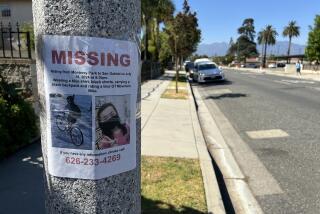PERSPECTIVE ON DIVERSITY : UC Is Unwaveringly Committed : The board of regents’ vote did not abolish the principle; it only changed the approach for achieving it.
Last summer’s decision by the University of California’s Board of Regents to end the use of race and gender as factors in UC admissions has sparked debate nationwide. The controversy could become a tragedy if the public concludes that UC no longer welcomes young people from every facet of California’s richly diverse society.
The regents’ vote was not a vote to abolish diversity. On the contrary, the resolution that the board approved explicitly recognizes the value of reflecting the state’s diversity at UC and specifies steps to achieve it. As a public institution in the nation’s most ethnically and culturally diverse state, the university is obligated to serve Californians of every race, ethnicity, gender and socioeconomic background. And there is no university in the world that offers students greater opportunities to study and work with people who represent every walk of life and just about every intellectual persuasion.
In the 1960s, the University of California was among the first universities to establish programs to reach out to minority and low-income students. UC carried the landmark Bakke case to the Supreme Court in the 1970s. In the 1980s, the university led every other major institution in the country in championing diversity and excellence. Today, three of our nine campuses are so diverse that no single ethnic group makes up a majority of students, and we continue to seek a student body, faculty and staff that reflect California’s diversity. That is sound educational policy for the university and good social policy for California.
Of course it will be harder to accomplish our goal without taking race, ethnicity and gender into account. The challenge is especially compelling because access to higher education is key to preparing the leaders of California in the 21st Century.
But we have more than a year in which to reassess the university’s admissions policies before the January, 1997, effective date of the regents’ resolution on admissions. That will give the university’s faculty time to review and revise admissions criteria and to inform students and parents about the changes.
If race and ethnicity can no longer be used in admissions decisions, then obviously outreach--the effort to help students in grades K through 12 prepare themselves for college--becomes more important in encouraging equal educational opportunity. The regents’ resolution calls for the appointment of a task force to recommend new directions and sources of support for student outreach efforts. The university already has a nationally recognized array of outreach programs. These have been so effective that universities around the country come to California to recruit the graduates of these programs. We can therefore build on our 30 years of experience in what works for schools, for students and for teachers in improving the academic preparation of California’s young people.
We now also have the opportunity--the imperative--to build a closer partnership with K-12 and with all branches of education in California. The California Education Round Table, which includes the leaders of the three segments of public higher education and the independent colleges and universities, the superintendent of public instruction and the director of the California Postsecondary Education Commission, pledged last month to redouble efforts to bolster student performance.
California is diversifying at a dramatic rate and must have public universities that encompass the state’s population in all its variety. The most immediate and urgent task the university faces is getting out the word to students and parents that diversity remains our goal, even though the ways we accomplish that goal will change.
At the University of California, the question is not whether to continue our pursuit of diversity. The only question is how.
More to Read
Sign up for Essential California
The most important California stories and recommendations in your inbox every morning.
You may occasionally receive promotional content from the Los Angeles Times.






